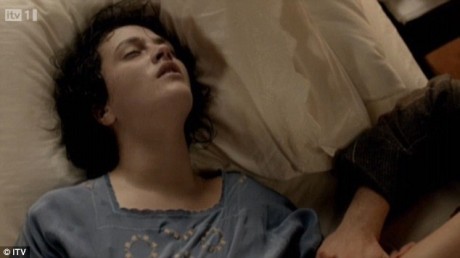maternal deaths: lady sybil in the real world

In a recent episode of British period drama Downton Abbey, viewers watched with horror as the beloved character Lady Sybil Branson died in childbirth. She was a strong, independent female character, well loved by her husband and family, and had an otherwise healthy and normal pregnancy. However, she suffered from eclampsia and met her untimely end at the depicted age of just 24.
Curious about the manner in which she died, I did a bit of research on eclampsia, which is characterised by life-threatening seizures during childbirth. It is the result of untreated pre-eclampsia, the symptoms of which include extremely high blood pressure and abnormally high levels of protein in the urine. The most critical aspect of eclampsia is that it is diagnosed as pre-eclampsia before the actual labour begins. This was the most highly charged part of the Downton Abbey episode because the two doctors present at the birth disagreed over whether or not Sybil was exhibiting these signs of pre-eclampsia and crucial time was wasted. A Caesarean section (or c-section) may have saved the unborn child and given Sybil the best chance possible. But this did not happen, and Sybil fell victim to the condition.
What truly frightened me most about eclampsia was the ominous statement that there is no cure.
The fact that this issue was brought up in a show like Downton Abbey suggested to me that this was something old-fashioned; that death during childbirth was something that rarely occurred in modern times. Our medical progress has come so far in the last 50 years – surely something as important and natural as pregnancy and childbirth would be virtually risk-free, right?
While it is true that maternal deaths have seriously declined since the era depicted in Downton Abbey (1920s) and even more so in the past 20 years, it goes without saying that the number of deaths should be zero.
The most common reasons for deaths in childbirth – the lack of qualified or skilled care during childbirth, and complications arising from abortion – are avoidable ones. We are living in a technological age where amazing medical advancements and discoveries result in cures. The question begging to be asked here is simply: why are women still dying by the hundreds of thousands in childbirth?
We are fortunate enough here in Australia to have one of the lowest maternal death rates in the world. We have access to suitable health care and medical supplies and have the advantage of being able to detect if something is amiss in a pregnancy early on, before it develops into a larger problem.
But we are not immune from the tragedy of maternal deaths. Our Aboriginal and Torres Strait Islander population is more than twice as likely to suffer from fatal complications in childbirth than non-Indigenous women. This is no doubt due to their lack of access to the medical system, and it should really be a priority for all politicians campaigning in the upcoming election to change this. A divide between Indigenous and non-Indigenous Australians should not exist.
Looking at the CIA list of maternal mortality rates, it is clear to see the heart of the problem. The top 20 or so countries with the highest mortality rates are developing countries crippled by poverty, disease and famine. It is our task, as the 166th ranked country, to aid the countries above us in changing these death rates.
This is no small task. It involves massive international aid and funding, which some may argue we do not have at this point in time. But we can start by supporting international aid groups, like WomenAid International. In this day and age, we should not be seeing so many women dying in childbirth, especially when, as a global society, we have the means of prevention, and education. If we can better educate the populations of these countries, we can significantly lower the maternal death rate.
There is huge global inequality in existence here, and this is undoubtedly a global crisis – one that requires urgent attention from leaders of countries like Sweden, Austria and Japan (who are among those nations with the lowest maternal death rate worldwide) to give the issue the awareness it needs.
By Alexandra Van Schilt

